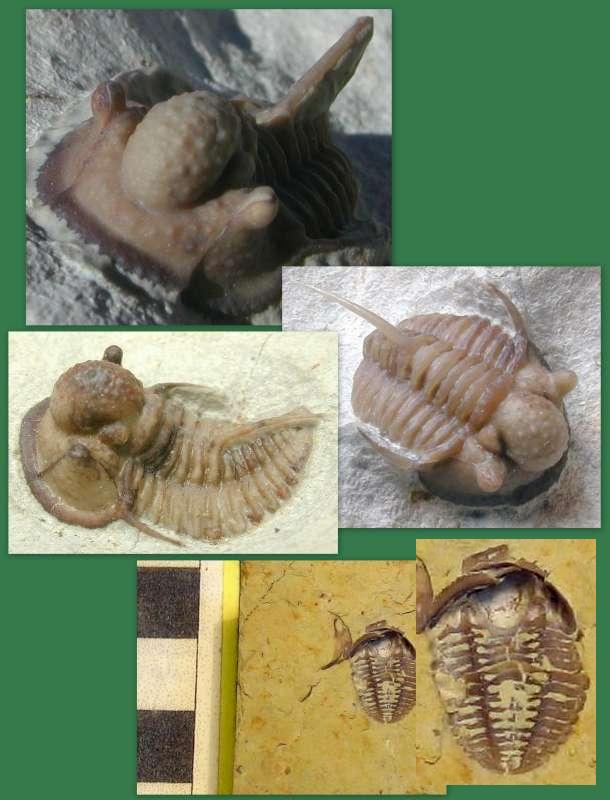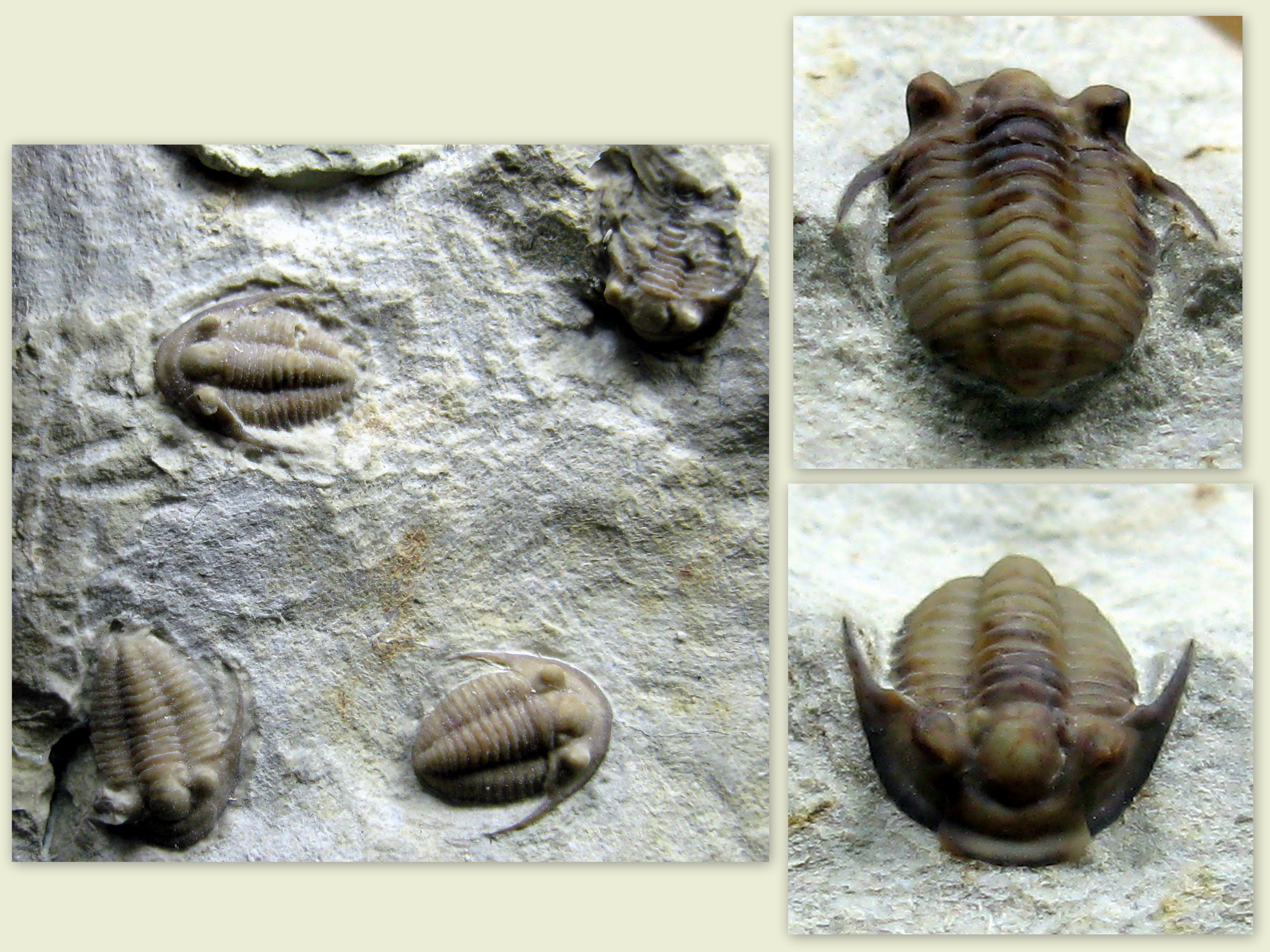Aulacopleuridae
|
At Black Cat Mountain these trilobites include species of Cyphaspis and Maorotarion described and illustrated consecutively below.
Superfamily Aulacopleuroidea
Family Aulacopleuridae
Genus Cyphaspis
This
species was named after Bob Carroll, who provided specimens for
description. The genus is generally characterized by the presence of
the noticeable spine emerging from the sixth thoracic segment, the
bulbous glabella and the long spines terminating the lateral corners of
the free cheeks. Several specimens of Cyphaspis carrolli
are found each year, but their intact preparation is quite difficult.
Notice all of the tubercles on the glabella? Those should terminate in
hair-like spines, but these are erased by the air abrasion process used
to remove the matrix from the fossil. Bob has indicated to me that
this species is actually covered by fine hair-like spines, especially
on the large thoracic spine, but these are only visible under his
stereo microscope during the preparation process. At the bottom of the
collage below is an unusual occurrence, a view of the ventral surface
of this species. The adjacent inset image shows it larger for easier
viewing. All photographs were taken by G.P. Hansen, except the right
most one, which was provided by John Moffitt and Neal Immega.

| While Cyphaspis carrolli
is found several times each year at Black Cat Mountain, rarely does a
pair of them appear as in the association shown here. Below the
photograph of the pair, I am showing a lateral image of the "leading"
specimen, which allows a nice view of the thoracic spine and the
outline and tubercular structure on the head of this trilobite. The
photographs were provided courtesy of Sam Stubbs and Neal Immega.

| Superfamily Aulacopleuroidea
Family Aulacopleuridae
Genus Maorotarion
Specimens of Maorotarion axitiosum,
usually well under 1 cm in length, are occasionally found as
individuals. However in 2008, two pieces were found with multiple
specimens of this tiny trilobite on each. Trilobite associations are always interesting for the potential social information they may convey. See for instance an article on this phenomenon in LiveScience where specialists speculate on their sexual and migratory habits. The photographs of these
shown below were taken by G.P. Hansen.

|
|
